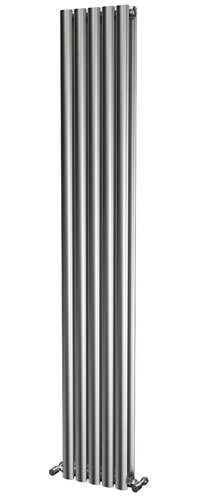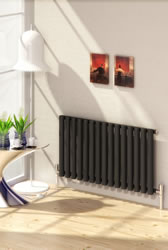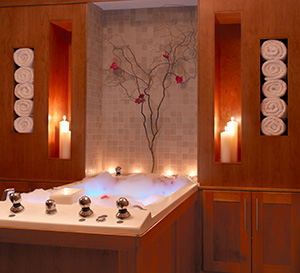Heating the home is by far the biggest utility cost during the winter months for home owners. You may not be aware, but up to twenty five percent of your energy consumption in peak months comes from the use of home heating through central systems, which is why so many people are moving to energy efficient designer home radiators and other methods to keep energy costs lower. It wasn't too long ago that thermostats for heating the home were standard devices: they couldn't be programmed and lots of energy was lost due to inefficiencies. We now have the ability to save on across-the-home heating by updating our thermostats and using 21st century solutions to heat the home. Below, we will discuss some of these awesome solutions that, when coupled with single-room heating solutions like radiators, can save you big money each and every winter.
Total Connect Comfort
We lose so much energy through improper insulation and leaving the heater running constantly to avoid the cold when we get off of work. If there was a solution to fix at least one of those problems, would you act upon it? The Total Connect Comfort system is an innovation by Honeywell that functions with compatible Honeywell smart thermostats, and can be operated from anywhere in the world through a mobile application. The app's interface gives you the ability to adjust the temperature for the entire house, or just for one room. The thermostat can be configured to turn on before you get home and turn off when you leave the house, which saves tons of energy and makes sure that you're never cold. Various Connect Comfort systems are available, with thermostats starting at as little as £100.
Rogers Smart Home Monitoring
Using your heat sparingly can help save energy, as can using a combination of column radiators and central heating. To get the most out of your central heat potential, you can install a solution like the Rogers Smart Home Monitoring system. Much like the Honeywell system, this works with various Rogers thermostats and can be controlled through the use of mobile technology. Not only can you adjust the thermostat when at home from the unit itself, but you can also do so when out and about. The system will even learn your heating preferences and set a schedule that is optimal for saving energy and preserving comfort.
Smart Air Conditioner
You can purchase heated towel rails to keep your towels warm, and a bathroom radiator to do the same for your bathroom, but what about the home as a whole? Samsung wasn't about to be outdone by its competitors, and as such has introduced its Smart Air Conditioner line of thermostats. Don't let the name fool you: it can be used year-round for home climate control and management, and usually runs around £150 for a compatible thermostat and system. Integrated with mobile apps, real-time statistics are delivered to any mobile device for review and input. This will allow you to make any changes in the home's temperature as necessary. Planning to come home early? You can override the smart schedule to warm things up before you get there. You'll also be able to activate settings such as the clean air wizard and smart saver energy feature whenever needed.
Saving energy and maintaining comfort during the winter months is a prime objective for most. Just in case you were wondering, all of these aforementioned systems can also be used in the summer months for cooling the home efficiently. With all of these savings, you may want to invest in single-room radiators and heated towel racks to increase the winter comfort of your home, or simply save that money for another purpose. Whatever your decision, it will surely irritate the utility companies who continue to want to earn pound after pound of your hard-earned income.




